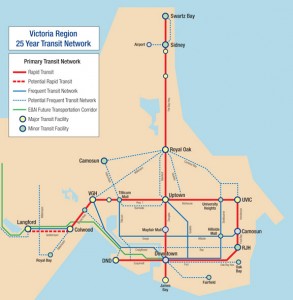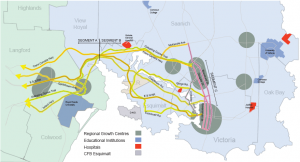Three years ago the Greater Victoria Chamber of Commerce was instrumental in killing one of the best transit projects this city has seen: the Douglas St. busway. They had this to say:
The Greater Victoria Chamber does not support the proposed plan for the bus rapid transit system on the Douglas Street corridor. While in support of bus rapid transit, the chamber is concerned that all the transportation modes included in this plan cannot be accommodated in the available space on Douglas Street. (from the GVCC’s policy page)
Worst of all, it was already paid for. After years of unfunded projects, they had to go and kill one of the few that was. Now, I fear they are going to do it again. The Victoria Regional Rapid Transit project is nearing completion and they have again selected Douglas St. as the corridor, as they should given it is the most logical route. Just like last time, the Douglas St. merchants are complaining
What the Chamber of Commerce should be doing is working on behalf of all their members, not just the blinkered ones on Douglas St. A new transitway will speed people into downtown, people who will spend money at chamber members. They are a business lobby group after all.
But all is not lost. The GVCC’s stubbornness isn’t unique; the US Chamber of Commerce is shedding members because of its opposition to climate change but an alternative has recently appeared: the US Green Chamber. An out-growth of the San Diego Green Chamber, this new group promises to be a forward-thinking business group, exactly what the US (and Canada, given our proximity) needs. Maybe what Victoria needs is something similar, something like the Values-Based Business Network — who are currently rethinking their mandate — but in a wider scope.


